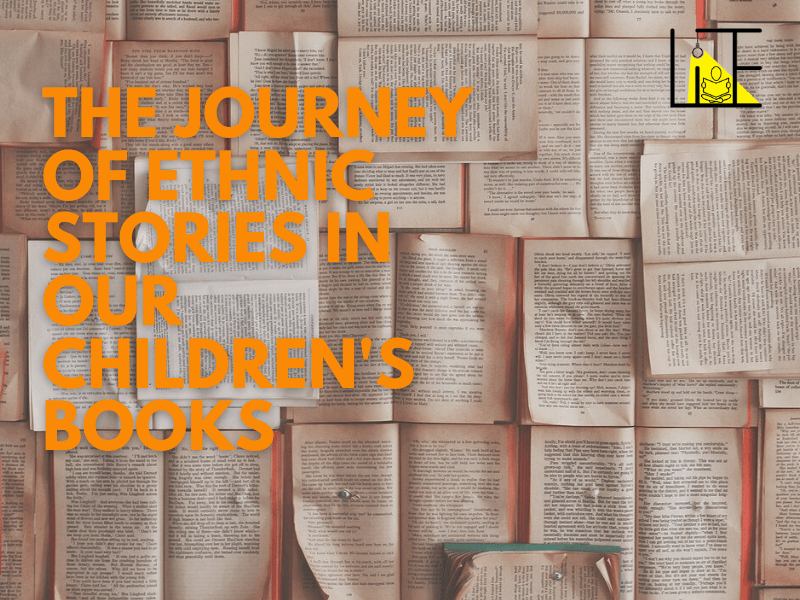Preserving ethnic stories and oral traditions is of utmost importance in safeguarding our cultural heritage and fostering a strong sense of identity within communities. These narratives encapsulate the collective wisdom, values, and experiences passed down through generations, offering a glimpse into the diverse perspectives and rich tapestry of our cultural diversity. Children’s books play a pivotal role in capturing and sharing these invaluable narratives, providing young readers with immersive journeys into captivating worlds and the opportunity to glean valuable life lessons. With their high-quality content and engaging storytelling, these books act as bridges, bridging the gap between the past and present, and instilling a profound appreciation for cultural heritage. Join us as we embark on an exciting exploration of how children’s books can preserve and celebrate ethnic stories, leaving an indelible legacy for generations to come.
Exploring Oral Traditions: Unlocking the Richness of Ethnic Narratives
Oral traditions hold immense significance within ethnic communities, serving as the foundation of cultural identity and collective memory. Passed down through generations, these vibrant narratives embody the wisdom, values, and customs of a community, forging a deep connection to their roots. Through unique storytelling techniques and rich cultural elements, oral traditions paint a vivid picture of the community’s history, beliefs, and rituals, captivating listeners with their rhythmic cadence and expressive language.
However, the preservation of oral traditions faces numerous challenges in today’s rapidly changing world. The encroachment of modernization, globalization, and the influence of dominant cultures pose threats to the continuation of these precious traditions. The passing of older generations, who hold the key to these narratives, further exacerbates the challenge of ensuring their survival.
Efforts to document and safeguard oral traditions require a delicate balance between respecting the oral nature of the narratives and embracing the technological advancements of the digital age. Initiatives such as recording oral histories, transcribing narratives, and engaging community elders as custodians of knowledge play a crucial role in preserving these traditions. Additionally, collaborations between communities, researchers, and cultural institutions foster the exchange of expertise and resources, facilitating the documentation and dissemination of oral traditions.
By actively engaging with and valuing oral traditions, we can celebrate the unique cultural heritage embedded within these narratives. Through their preservation, we honour the resilience and diversity of ethnic communities, ensuring that their voices and stories endure for future generations. Join us as we delve into the significance, beauty, and challenges of preserving oral traditions, uncovering the timeless wisdom and treasures they hold.
The Transformation to Written Narratives: Preserving the Essence of Ethnic Stories
The transition from oral traditions to written narratives holds immense importance in preserving and sharing ethnic stories. While written narratives provide wider accessibility and long-term preservation, they must accurately capture the essence of oral traditions, including cultural elements and storytelling techniques. Challenges arise in maintaining authenticity and preserving unique cultural expressions during this transition. Collaborative efforts involving community members, linguists, writers, and scholars are crucial to ensuring the integrity and cultural identity of ethnic stories. Through the transformation to written narratives, we safeguard and celebrate the richness of these narratives, fostering cross-cultural understanding and passing down wisdom to future generations.
Creating Ethnic Children’s Books
Creating ethnic children’s books is a creative endeavour that plays a pivotal role in preserving and celebrating diverse cultural identities. One key aspect is the role of illustrations, which serve as visual storytellers, capturing and conveying the cultural nuances embedded within the narratives. Through carefully crafted illustrations, young readers are immersed in vibrant worlds, where they can explore different traditions, clothing, landscapes, and symbols unique to each ethnic community. These illustrations not only enhance the reading experience but also foster a sense of connection and appreciation for diverse cultures.
Designing
Designing engaging and interactive books for young readers is another crucial aspect of creating ethnic children’s books. The content is carefully crafted to captivate young minds, incorporating age-appropriate language and storytelling techniques that resonate with children. Interactive elements, such as pop-ups, flaps, and puzzles, are integrated to enhance the reading experience, making the stories come to life. By engaging children actively, these books encourage curiosity, empathy, and a deeper understanding of diverse cultures.
Publishing
Publishing and distributing ethnic children’s books is essential to ensure their availability to a wider audience. Collaborations with publishers, bookstores, libraries, and educational institutions facilitate the reach and accessibility of these books. Digital platforms and online marketplaces further expand the distribution channels, making ethnic children’s books accessible globally. This allows children from various backgrounds to have access to these invaluable resources, promoting inclusivity, cultural appreciation, and cross-cultural understanding.
Our Vision
In creating ethnic children’s books, we embark on a journey to inspire young minds, ignite their curiosity, and foster a deep appreciation for the richness of cultural diversity. Through the power of illustrations, engaging content, and strategic distribution, we aim to provide young readers with a gateway to explore, understand, and celebrate the world’s diverse ethnic communities. Together, let’s open doors to new horizons and nurture the next generation of global citizens who embrace and value cultural differences.
Conclusion
In conclusion, the ongoing journey of preserving and sharing ethnic stories through children’s books speaks to our unwavering dedication to upholding cultural diversity and inclusivity. By actively supporting and promoting ethnic children’s books, we actively contribute to the safeguarding of cultural heritage. It also helps in the fostering of cross-cultural understanding. These books serve as captivating portals to vibrant worlds, beckoning readers of all ages to immerse themselves in the richness of ethnic narratives. Let us wholeheartedly continue to embrace and celebrate the inherent beauty and wisdom encapsulated within these stories. Our goal is to ensure future generations can partake in the enchantment of diverse cultures. Together, let us embark on a lifelong expedition of discovery, appreciation, and unity as we embark on remarkable adventures within the pages of ethnic children’s books.

